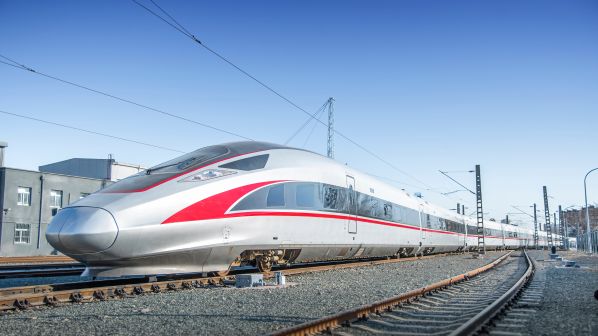CHINA’s State Council has announced plans to expand the country’s high-speed network to 50,000km by 2025, up from 38,000km at the end of 2020, with the total network reaching 165,000km, an increase of 19,000km from 2020. The plans were included in the 14th five-year plan, which covers all modes of transport.
The new high-speed lines that will be constructed are:
- Beijing - Xiongan - Shangqiu
- Baotou - Yinchuan
- Xiangyang - Changde
- Tianjin - Xinyi
- Xi'an - Chongqing
- Xi'an - Shiyan
- Changsha - Ganzhou
- Xiongan - Xinzhou
- Taiyuan - Suide
- Yan'an - Yulin - Ordos
- Changchun - Tonghua
- Dunhua - Mudanjiang
- Harbin - Tieli
- Shanghai - Zhapu - Hangzhou
- Ningbo - Taizhou - Wenzhou - Fuzhou
- Jiaozuo - Luoyang - Pingdingshan
- Fuyang - Huanggang
- Yiyang - Loudi
- Tongren - Jishou
- Shaoyang - Yongzhou
- Nanchang - Jiujiang, and
- Zhanjiang - Haian.
New conventional lines include a second line connecting Liuzhou with Guangzhou, along with the Ruijin - Meizhou, Wenzhou - Wuyishan - Ji'an, Dingxi - Pingliang - Qingyang, Taizicheng - Xilinhot, Xiantao - Honghu - Jianli, Taiyuan - Heshun, Dali - Panzhihua, and Wubei - Zhundong lines. The plan also includes the improvement and reconstruction of the Fuyu - Jiagdaqi, Nanjing - Wuhu, Yaqueling - Yichang, Tianjin - Jixian, Wangqing - Tumen, and Zhongwei - Pingliang lines.
Technological advancements
The Five Year Plan also includes a railway technological innovation plan, which outlines a range of advances and planned achievements.
This includes increasing the use of the standard Fuxing EMUs, breakthroughs in the development of 400km/h passenger trains under China’s CR450 innovation, the development of 30,000 tonne heavy-haul trains, and higher-speed freight trains operating at 160km/h or above. Inter-city and urban rail fleets will also be made lighter and more intelligent and energy efficient, while work will continue on the 600km/h maglev and the exploration of hyperloop systems.
The plan also emphasises a shift to lighter-weight technologies, the demonstration of autonomous construction and maintenance equipment, and the development of new bridge systems including a box-girder system for high-speed railways. There are also plans to evolve the China Train Control System (CTCS) and build a research and testing platform for electromagnetic effects on the environment. Research is also underway to develop a complete set of railway design and construction technologies that include tunnels longer than 30km through areas with complex geology, and large-span deep-gorge bridges.
To improve operation, research will be undertaken to reduce headways on high-speed lines, and improve intermodal passenger transportation systems and passenger and freight services technologies. The www.12306.cn and www.95306.cn online passenger and freight portals will be upgraded, while intelligent management and control systems will be developed for large-scale marshalling yards.
Plans to develop an intelligent railway include:
- the implementation of an intelligent railway 2.0 project on one of the Chengdu - Chongqing high-speed lines
- the promotion of 5G technologies
- a demonstration project showcasing Beidou satellite technologies, China’s equivalent of GPS
- the development of intelligent platforms for construction, signalling and communication, and traction power supply systems
- an automated driving technology platform, and
- a single multi-modal platform for passengers and freight based on the use of big-data.
Work on safety systems will include developing a new generation of higher-speed inspection vehicles, a video surveillance and intelligent analysis application system for high-speed lines, a railway safety cloud platform, disaster avoidance and rescue systems for high altitude and challenging geological areas, and large-scale infrastructure operation and maintenance systems for specific environments such as plateaus, mountains, and sea beds.

